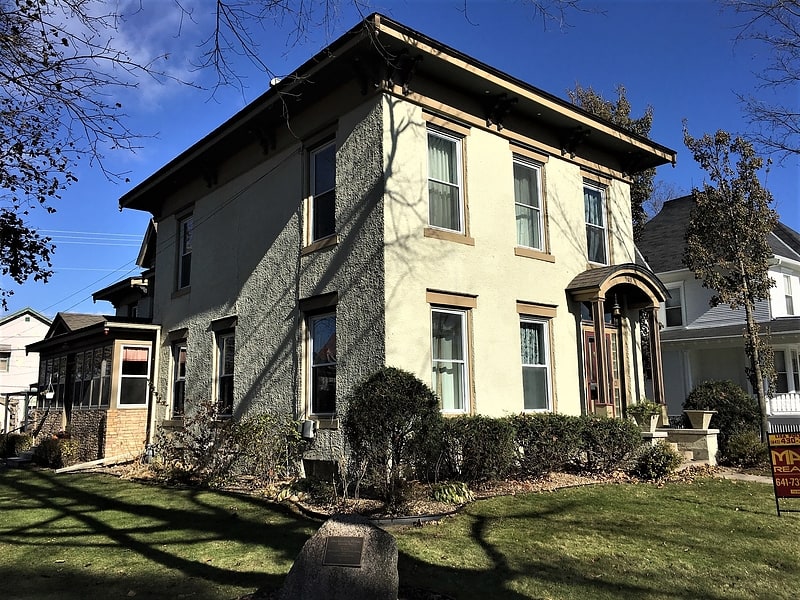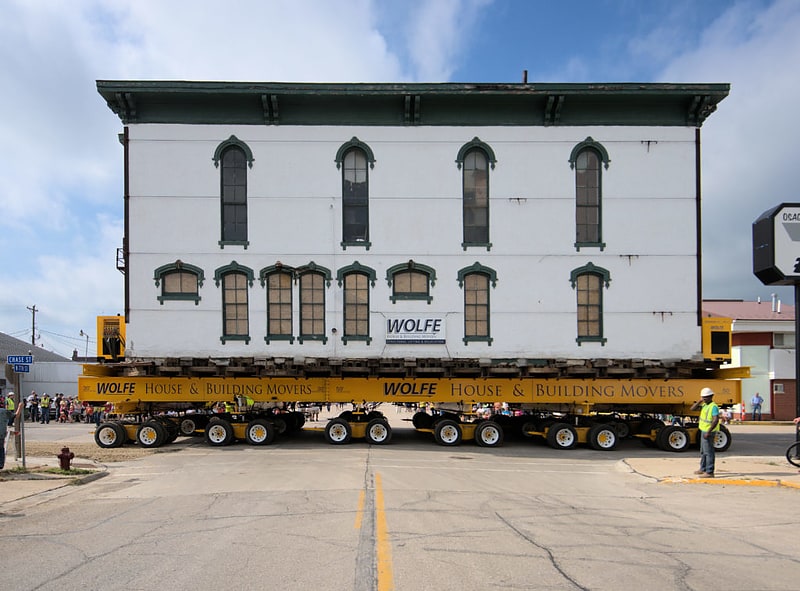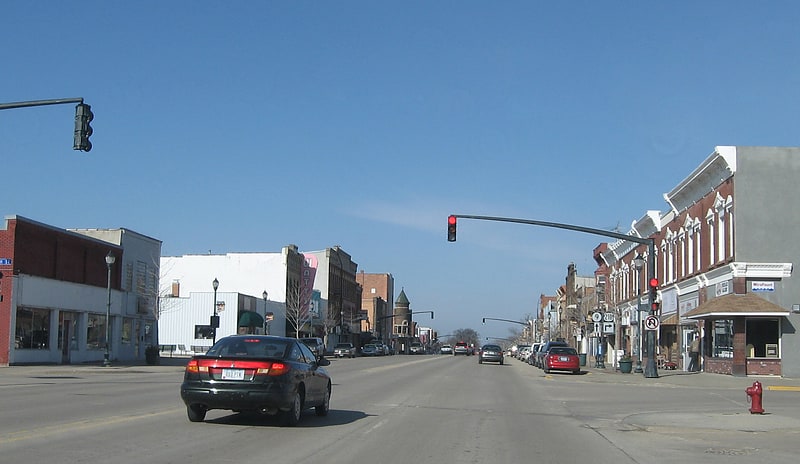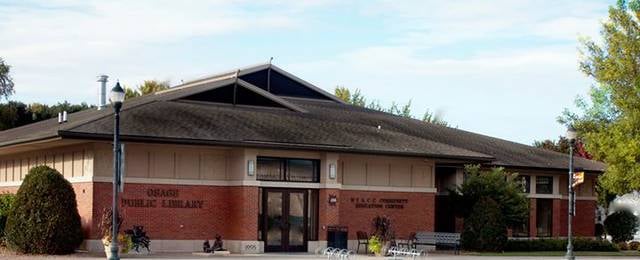Discover 5 hidden attractions, cool sights, and unusual things to do in Osage (United States). Don't miss out on these must-see attractions: Mitchell County Courthouse, Nathaniel Cobb and Lucetia Baily Deering House, and Cedar Valley Seminary. Also, be sure to include Osage Commercial Historic District in your itinerary.
Below, you can find the list of the most amazing places you should visit in Osage (Iowa).
Table of Contents
Mitchell County Courthouse

The Mitchell County Courthouse in Osage, Iowa, United States, was built in 2015. The former courthouse, built in stages between 1858 and 1926, was listed on the National Register of Historic Places in 1977 as a part of the County Courthouses in Iowa Thematic Resource. The courthouse is the second building the county has used for court functions and county administration.[1]
Address: Osage, 212 South Fifth Street
Nathaniel Cobb and Lucetia Baily Deering House

Building. The Nathaniel Cobb and Lucetia Baily Deering House is a historic building located in Osage, Iowa, United States. The house served as the residence for a prominent politician. Nathaniel Cobb Deering, for whom this house was named, was involved in a variety of pursuits from his native Maine to the California Gold Rush to his adoptive state of Iowa. A Republican, he represented Iowa's 4th congressional district in the United States House of Representatives. He was friends with Hannibal Hamlin, who served as Abraham Lincoln's first term Vice-President, from the time they served together in the Maine House of Representatives. Hamlin reportedly visited Deering here in Osage. The front two-story portion of the brick house built in 1862, and Deering had the back 1½-story section built in 1867. He died here in 1887, and his second wife, Lucetia, died here in 1919. The house was listed on the National Register of Historic Places in 2001.[2]
Cedar Valley Seminary

Event venue in Osage, Iowa. Cedar Valley Seminary is a historic seminary building currently at N. 7th and Chase Streets in Osage, Iowa. Prior to June 2016, it had been located at N. 6th and Mechanic Streets.
It was built in 1869 and added to the National Register of Historic Places in 1977.
The school was founded at Osage, as a Baptist academy, in 1862, by the joint efforts of Rev. Alva Bush, the citizens of Osage, and the Cedar Valley Baptist Association. On Monday morning, January 12, 1863, Prof. Bush opened the first term of the school, with seventeen boys and fourteen girls.
In his memoir "A Son of the Middle Border", Hamlin Garland recalled that in the late 1870s "The school was in truth a very primitive institution, hardly more than a high school, but it served its purpose. It gave farmers' boys like myself the opportunity of meeting those who were older, finer, more learned than they, and every day was to me like turning a fresh and delightful page in a story book, not merely because it brought new friends, new experiences, but because it symbolized freedom from the hay fork and the hoe."
Before going to the University of Chicago, the orientalist John Merlin Powis Smith taught Greek at Cedar Valley Seminary.
The school was closed in 1910 because, according to one historian, "Waldorf College was established in Forest City by the Norwegian Lutheran people and took away many students and much financial support that would naturally have come to the seminary; the grade of work in the public schools improved with time, and the Cedar Valley Seminary was a near neighbor. These reasons made it seem unwise to longer continue to maintain the seminary".[3]
Osage Commercial Historic District

The Osage Commercial Historic District is a nationally recognized historic district located in Osage, Iowa, United States. It was listed on the National Register of Historic Places in 2002. At the time of its nomination it contained 50 resources, which included 46 contributing buildings, one contributing structure, and three non-contributing buildings. The historic district covers most of the city's central business district.
Four settlers claimed four tracts of land that would become the city of Osage: Hiram Hart, 80 acres (32 ha) that is the southwest side; Dr. A.H. Moore, 80 acres (32 ha) for the southeast side; O.E. Tripp, the northwest side; and B.C. Whitaker on the northeast side. They were all pioneers from states to the east and not immigrants. The city was named for Orrin Sage, a banker from Massachusetts who contributed to the Gibbs, Boardman Company of Lyons, Iowa, which represented the speculative land interests of investors such as Sage. Osage initially developed to the east of the historic district. Its development to the west was the result of the location of the Illinois Central Railroad tracks and the Mitchell County Courthouse in the late 1860s.
The district contains a mix of retail commercial buildings, movie theaters, fraternal halls, professional offices, a cafe, a library, and auto-related businesses. The buildings range in size from one to three-story commercial blocks, and a majority of them are masonry construction. The period of significance is from 1865 to 1952, and the buildings are constructed during that time frame. Most of the buildings were constructed in the 1870s and the 1880s, which was a period of significant economic expansion for the city. There are also some notable buildings constructed in the 1910s and 1920s. The commercial Italianate and the Queen Anne architectural styles are dominant. The buildings line both sides of Main Street, which is the historic structure.[4]
Osage Library

Library
Address: 406 Main St, Osage